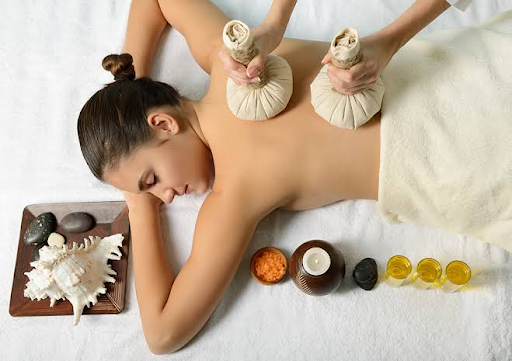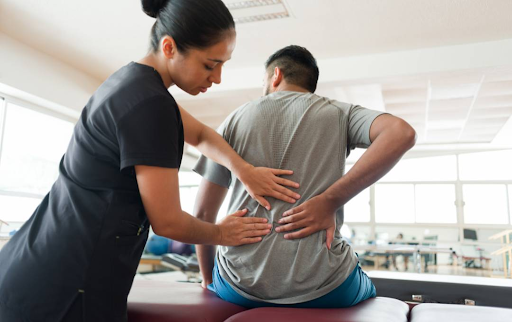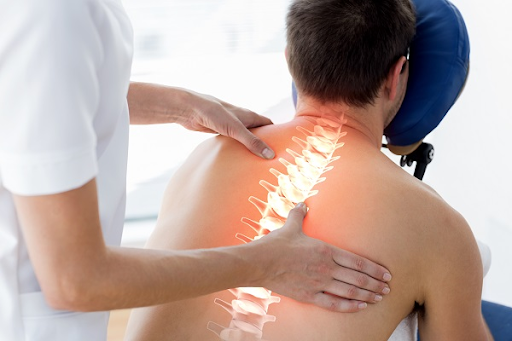In today’s fast-paced world, where stress and tension seem to be constant companions, the need for relaxation and rejuvenation has become more crucial than ever. Enter massage therapy, a time-honored practice that not only soothes the body but also calms the mind and nurtures the spirit. In this comprehensive guide, we’ll delve into the what, when, how, and why of massage therapy, exploring its myriad benefits and the various techniques employed to achieve them.
What is Massage Therapy?
Massage therapy is a holistic approach to wellness that involves the manipulation of soft tissues in the body to alleviate pain, reduce stress, and promote overall well-being. Dating back thousands of years, massage has been practiced in cultures around the world, evolving into numerous styles and techniques tailored to individual needs.
When to Consider Massage Therapy:
Massage therapy can be beneficial for a wide range of circumstances and conditions. Whether you’re seeking relief from chronic pain, recovering from an injury, or simply looking to unwind, massage therapy offers something for everyone. Some common situations where massage therapy is recommended include:
- Stress Relief: In today’s hectic world, stress has become a prevalent issue for many. Massage therapy provides a natural and effective way to relax both the body and mind, reducing tension and promoting a sense of calm.
- Pain Management: Whether it’s back pain, neck stiffness, or muscle soreness, massage therapy can help alleviate a variety of physical discomforts. By targeting specific areas of tension and promoting circulation, massage can provide relief from chronic pain conditions.
- Injury Recovery: Following an injury or surgery, massage therapy can play a crucial role in the rehabilitation process. By improving circulation, reducing inflammation, and increasing flexibility, massage can speed up recovery time and enhance overall healing.
- Sports Performance: Athletes often turn to massage therapy to enhance their performance and prevent injuries. Sports massage, in particular, focuses on addressing the specific needs of athletes, such as improving flexibility, reducing muscle tension, and promoting faster recovery after intense workouts.
- Mental Well-being: Beyond its physical benefits, massage therapy also has profound effects on mental health. By triggering the release of endorphins and reducing levels of stress hormones like cortisol, massage can alleviate symptoms of anxiety, depression, and insomnia.
How Massage Therapy Works:

Massage therapy involves the skilled manipulation of soft tissues in the body, including muscles, tendons, ligaments, and fascia. Various techniques are employed to achieve different effects, ranging from gentle strokes to deeper pressure. Some common massage techniques include:
- Swedish Massage: This classic massage technique involves long, flowing strokes, kneading, and circular movements to promote relaxation and improve circulation.
- Deep Tissue Massage: Deep tissue massage targets the deeper layers of muscle and fascia to release chronic tension and adhesions. This technique is ideal for addressing specific areas of pain and stiffness.
- Trigger Point Therapy: Trigger points are tight areas within muscle tissue that can cause pain and discomfort. Trigger point therapy involves applying pressure to these points to release tension and alleviate pain.
- Thai Massage: Thai massage combines assisted stretching, acupressure, and compression techniques to improve flexibility, release tension, and promote overall wellness.
Why Choose Massage Therapy?

The benefits of massage therapy are vast and encompass both physical and mental well-being. Here are just a few reasons why massage therapy is a valuable addition to your wellness routine:
- Pain Relief: Whether you’re dealing with chronic pain or acute discomfort, massage therapy offers effective relief by targeting tense muscles, reducing inflammation, and promoting circulation.
- Stress Reduction: In today’s fast-paced world, stress has become a ubiquitous presence. Massage therapy provides a natural and effective way to unwind, relax, and restore balance to the body and mind.
- Improved Flexibility and Range of Motion: By releasing tension and adhesions within muscles and connective tissue, massage therapy can enhance flexibility, mobility, and range of motion, making daily activities easier and more comfortable.
- Enhanced Recovery: Whether you’re recovering from an injury, surgery, or intense workout, massage therapy can speed up the healing process by promoting circulation, reducing inflammation, and easing muscle soreness.
- Mental Well-being: Massage therapy has profound effects on mental health, helping to alleviate symptoms of anxiety, depression, and insomnia by promoting relaxation, reducing stress hormones, and boosting mood-enhancing neurotransmitters.
Conclusion:
In conclusion, massage therapy offers a holistic approach to wellness that addresses both the physical and mental aspects of health. Whether you’re seeking relief from pain, stress, or simply looking to enhance your overall well-being, massage therapy provides a natural and effective solution. By understanding the what, when, how, and why of massage therapy, you can embark on a journey towards greater relaxation, rejuvenation, and vitality. So why wait? Treat yourself to the healing power of massage therapy today and experience the transformative benefits for yourself.
Frequently Asked Questions
What is massage therapy?
Massage therapy involves the manipulation of muscles, tendons, ligaments, and soft tissues of the body to promote relaxation, relieve tension, and alleviate pain. It encompasses a variety of techniques performed by trained professionals to address different physical and mental health concerns.
What are the benefits of massage therapy?
- Massage therapy offers numerous benefits, including:
- Stress reduction and relaxation
- Relief from muscle tension and pain
- Improved circulation and lymphatic drainage
- Enhanced flexibility and range of motion
- Rehabilitation from injuries
- Boosted immune system function
- Better sleep quality
- Alleviation of anxiety and depression symptoms
When should I consider getting a massage?
- You may consider getting a massage:
- When you experience muscle tension or soreness from physical activity or stress
- If you suffer from chronic pain conditions like back pain or headaches
- To complement your fitness or wellness routine
- As part of a rehabilitation program after an injury or surgery
- When you need to relax and unwind from the demands of daily life
How often should I get a massage?
The frequency of massage therapy sessions depends on your individual needs, lifestyle, and health goals. Some people benefit from weekly sessions to manage chronic conditions or high levels of stress, while others may find monthly or bi-monthly sessions sufficient for maintenance and relaxation. Your massage therapist can help determine the appropriate frequency based on your circumstances.
What types of massage techniques are available?
There are various massage techniques tailored to specific needs and preferences, including:
- Swedish massage: A gentle, relaxing massage that uses long strokes, kneading, and circular movements to promote relaxation and improve circulation.
- Deep tissue massage: Targets deeper layers of muscles and connective tissue to address chronic tension and pain.
- Sports massage: Focuses on preventing and treating injuries, enhancing athletic performance, and promoting recovery for athletes and active individuals.
- Trigger point therapy: Targets specific points of muscle tension or “knots” to alleviate pain and improve range of motion.
- Thai massage: Combines yoga-like stretches, compression, and acupressure to improve flexibility, relieve tension, and promote relaxation.
How should I prepare for a massage session?
Before your massage therapy session, you can:
- Communicate your preferences, concerns, and any health conditions or injuries to your massage therapist.
- Arrive on time or a few minutes early to complete any necessary paperwork and relax before your session.
- Wear comfortable clothing and remove any jewelry or accessories that may interfere with the massage.
- Discuss any specific areas of focus or techniques you prefer with your massage therapist.
Are there any contraindications or risks associated with massage therapy?
While massage therapy is generally safe for most people, there are some contraindications and potential risks to consider, including:
- Certain medical conditions such as blood clotting disorders, severe osteoporosis, or recent surgery.
- Skin conditions or infections that could be aggravated by massage.
- Allergies to massage oils or lotions.
- Pregnancy complications or high-risk pregnancies (consult with your healthcare provider before receiving a massage).
- Communicate any health concerns or conditions to your massage therapist before your session to ensure a safe and effective treatment.
How can I find a qualified massage therapist?
To find a qualified massage therapist:
- Ask for recommendations from friends, family, or healthcare providers.
- Research massage therapy practices or wellness centers in your area and read reviews from other clients.
- Verify the credentials and certifications of massage therapists, ensuring they are licensed or certified by reputable organizations.
- Schedule a consultation or introductory session to discuss your needs and preferences with the therapist before booking a full session.
How can I incorporate massage therapy into my self-care routine?
You can incorporate massage therapy into your self-care routine by:
- Scheduling regular massage sessions to promote relaxation and manage stress.
- Practicing self-massage techniques at home using foam rollers, massage balls, or handheld massagers.
- Incorporating mindfulness or meditation practices into your daily routine to complement the benefits of massage therapy.
- Prioritizing relaxation, adequate sleep, hydration, and healthy nutrition to support overall well-being alongside massage therapy.

